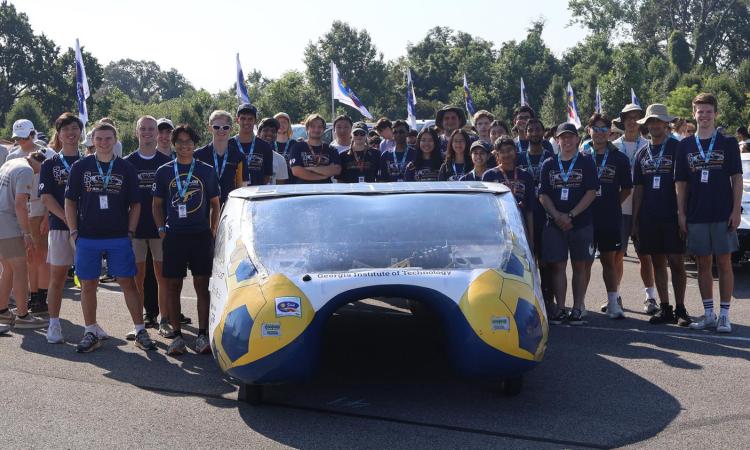Ph.D. students Gus Richter, Malhar Tamhane, and Felipe Sandoval took part in the Polar Aeronomy and Radio Science program, taking advantage of the unique geography and equipment to work on their Ph.D. research.
(text and background only visible when logged in)
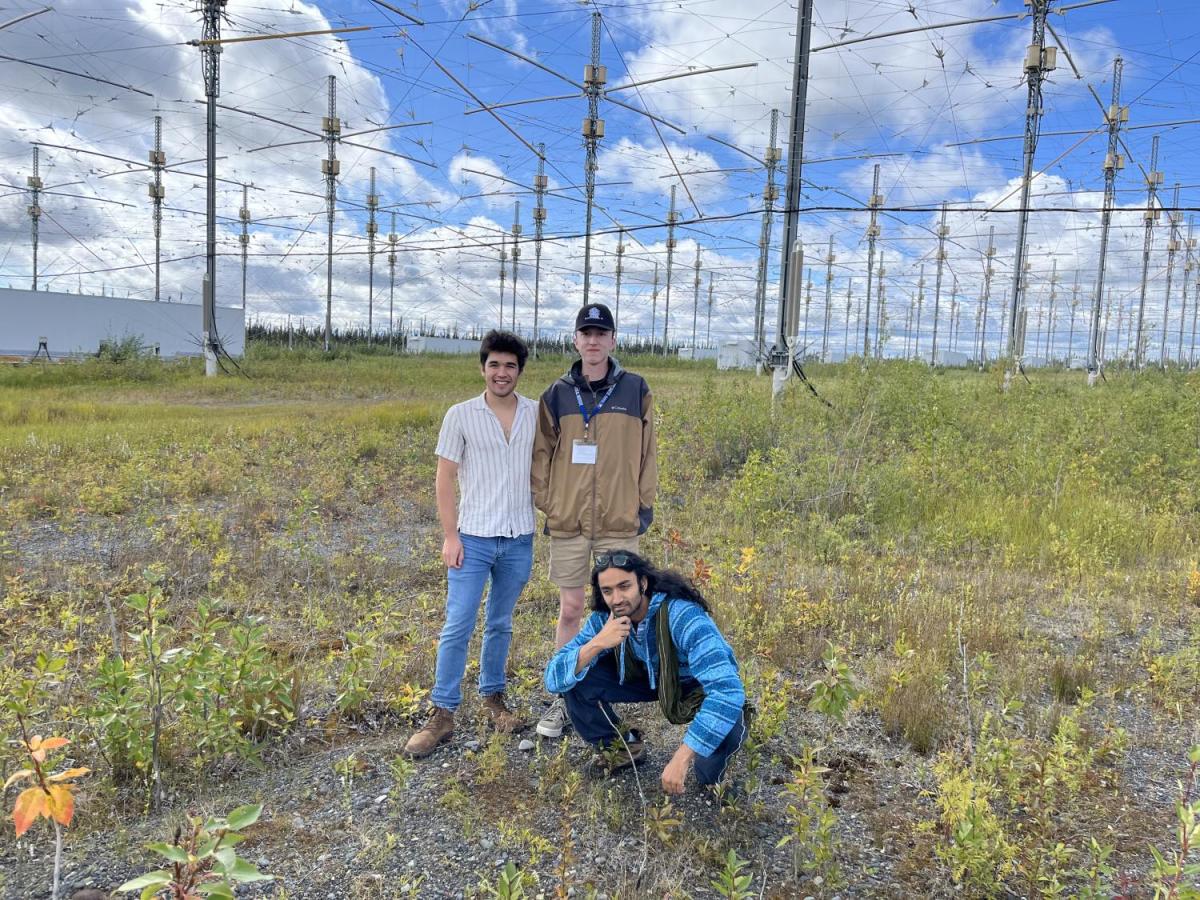
(text and background only visible when logged in)
Home to some of the best geophysical research facilities in the country, Alaska is a premier destination for scientific exploration. It’s become a popular destination for Georgia Tech students and researchers, especially those in Professor Morris Cohen’s Low Frequency Radio Lab.
School of Electrical and Computer Engineering (ECE) Ph.D. students Gus Richter, Malhar Tamhane, and Felipe Sandoval are the latest to make the trip to the “Last Frontier” as they work to push the boundaries of atmospheric research. The trio participated in the 2025 Polar Aeronomy and Radio Science (PARS) summer school program held in August at the University of Alaska Fairbanks and the High-frequency Active Auroral Research Program (HAARP).
The program provided access to advanced instrumentation, expert guidance, and fieldwork opportunities through the Subauroral Geophysical Observatory (SAGO) and the HAARP site in Gakona, Alaska.
HAARP has a flagship piece of equipment called the Ionospheric Research Instrument, which sends high-frequency (HF) radio waves into the ionosphere—a layer of Earth's upper atmosphere—to help scientists study how it behaves.
During the program, Richter used the equipment to collect very low frequency (VLF) data containing a mix of wave patterns known as harmonics. He is developing algorithms to separate these patterns and better understand how they interact.
ECE Takes You There
This story is part of the "ECE Takes You There" summer series highlighting student, faculty, and alumni adventures across the globe! From exciting internships to international travel, discover how the ECE community is exploring, learning, and growing.
Studying harmonics helps researchers learn more about the ionosphere. If scientists can isolate the more complex wave patterns, it could enhance data transmission using facilities like HAARP.
Simultaneously, Tamhane spent his time at PARS testing for a remote sensing technique developed by the Low Frequency Radio Lab.
The technique combines signals from lightning and from Navy nuclear submarine transmitters to probe the lowest region of the ionosphere. This technique can detect perturbations in the ionosphere, such as from a solar flare.
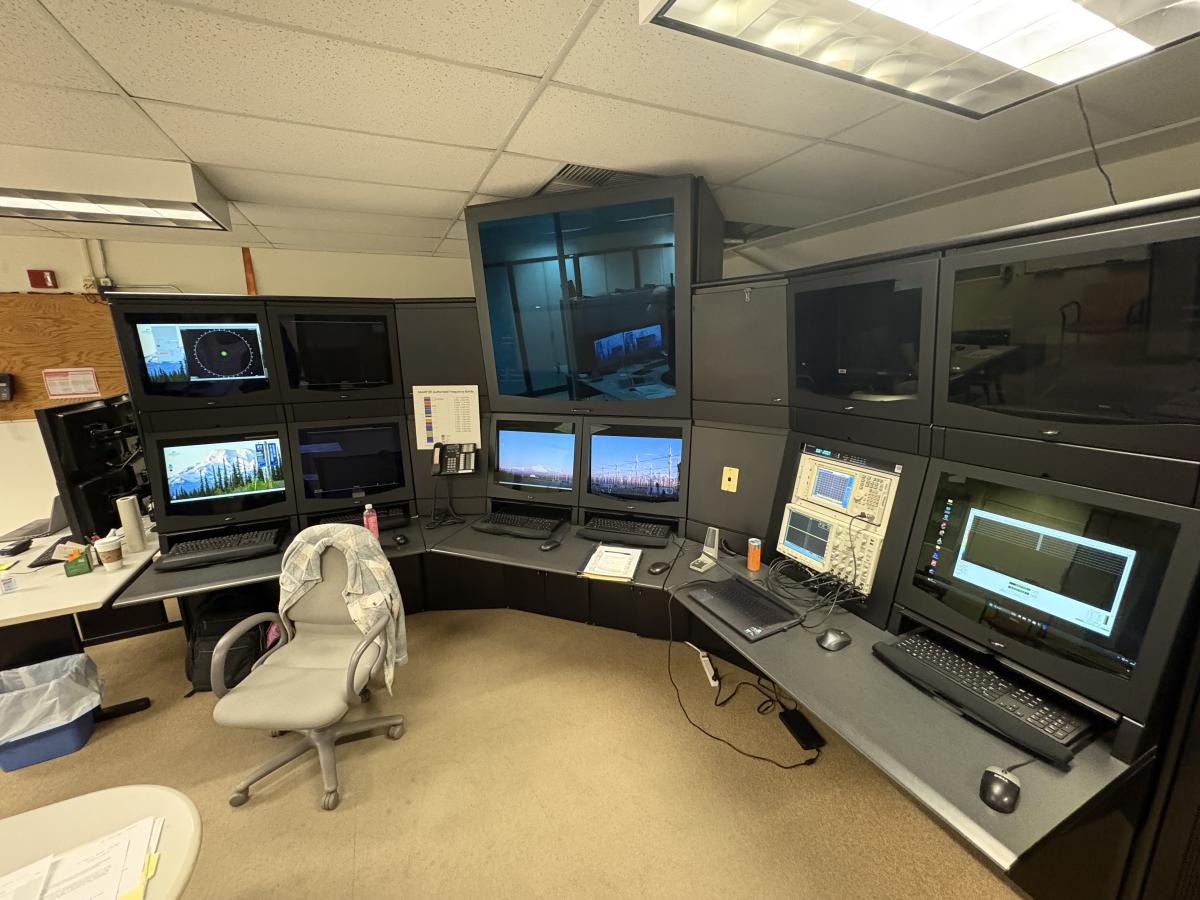
The operations center at HAARP.
The HAARP equipment can artificially generate these perturbations by heating the ionosphere, which can be measured with the lab’s novel sensing technique.
But experimentation wasn’t the only reason they went to Alaska.
Richter, Tamhane, and Sandoval spent the first week at the University of Alaska Fairbanks (UAF), where they sat in on a variety of lectures, including on plasma waves, ionospheric modification, and remote sensing using VLF waves.
They also got a tour of UAF facilities, meeting researchers from the Alaska Earthquake Center and the Georgia Tech-led Wilson Alaska Technical Center.
“A particularly memorable visit from the first week was at the Poker Flat Research Range, a launching site used to send sounding rockets into the upper atmosphere,” Richter said. “Having previously visited NASA’s Wallops Flight Facility in Virginia, I found it interesting to see a rocket range run by a university.”
The second week, the group went to HAARP in Gakona to see specialized facilities, including a 13-megawatt power plant composed of five electro-motive diesel generators.
“These types of engines are commonly found in locomotives and tugboats, so it was strange to see them in use at a radio facility,” Richter said. “The fluctuating and high-power demand of HAARP makes it impractical to rely on the local grid. The facility can burn through hundreds of gallons of fuel per hour, making energy costs the most significant expense when running experiments.”
While the unique geography of Alaska makes it the perfect place for their research, it also presents a rare opportunity to explore.
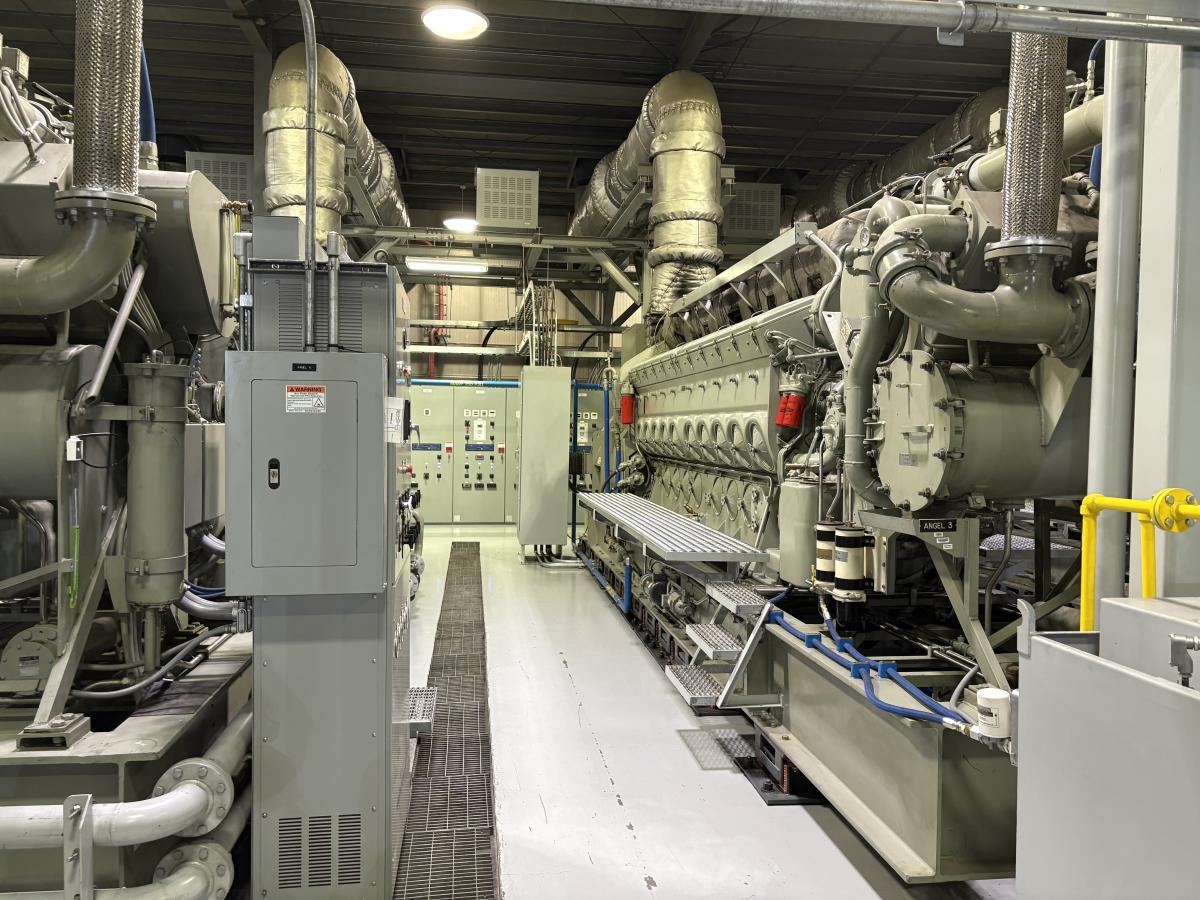
The specialized 13-megawatt power plant at HAARP.
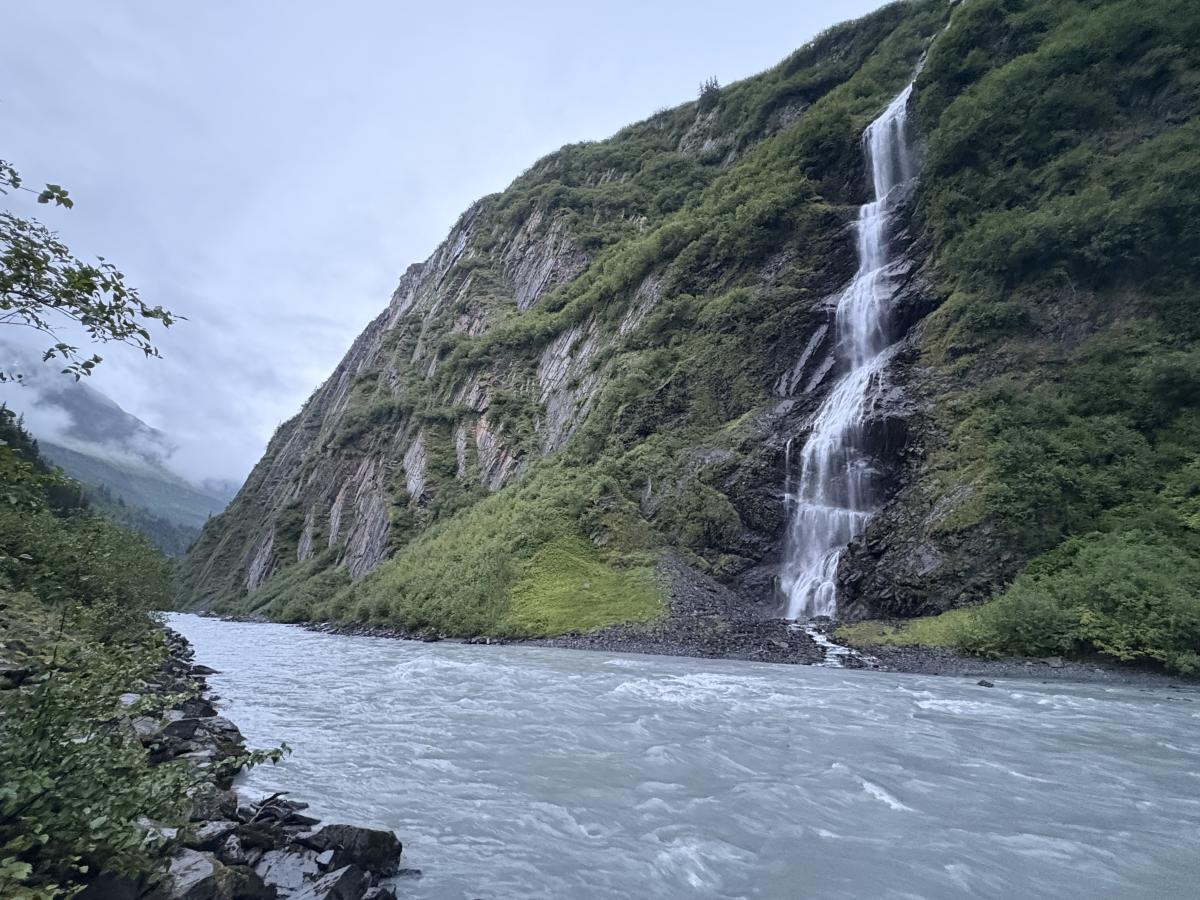
A waterfall the trio passed on Richardson Highway.
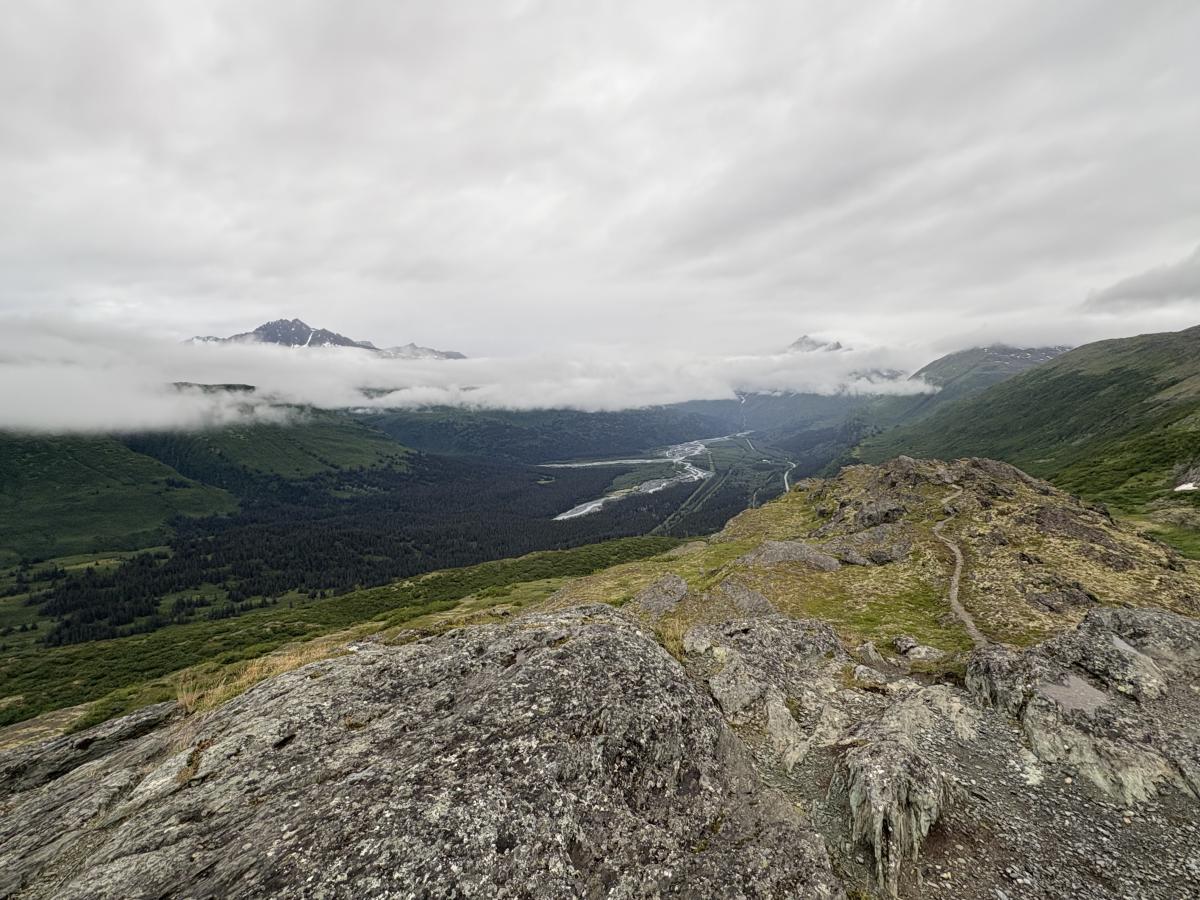
A mountain range near the Richardson Highway in Alaska.
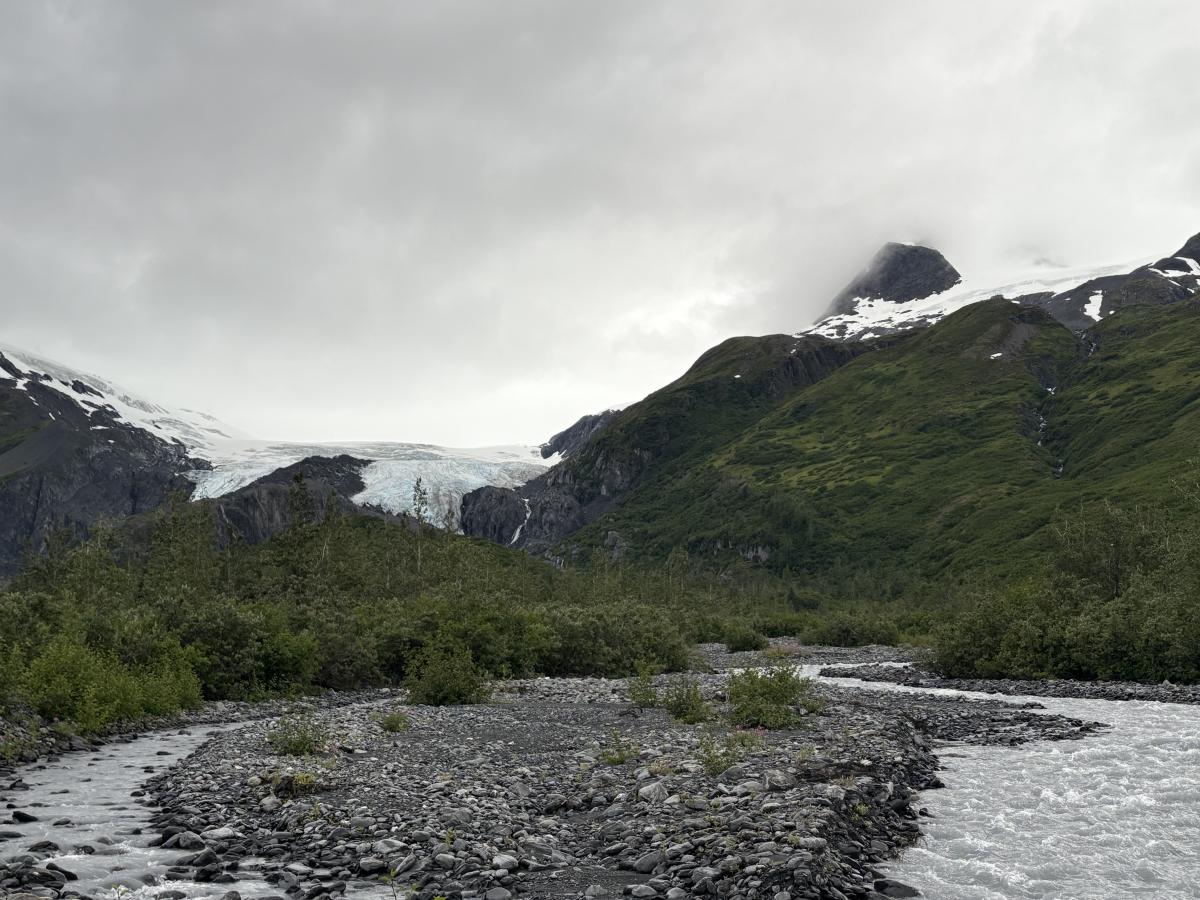
A glacier seen from the Richardson Highway.
“One of the most striking aspects of Alaska is its sheer size,” Richter said. “We drove long distances across the state, often without phone or Internet service. We were told that stopping at gas stations or markets whenever possible was essential.”
The students explored mountains, glaciers, the Gulf of Alaska, and the largest pink salmon hatchery in North America. They also toured the University of Alaska Museum of the North, which presented the history of Alaska—from prehistoric times to Russian colonization, and the World War II battles that occurred in the Aleutian Islands.
Having returned, they will continue their research in Cohen’s lab.
Richter is testing an algorithm he developed for separating VLF signals from each other, and plans on using the data he collected at HAARP, among other datasets, to help assess the performance of his algorithm in various applications.
Meanwhile, Sandoval is finishing his design of an imaging riometer, an instrument that captures two-dimensional snapshots of the ionosphere. He is planning on going back to Alaska in early 2026 to place the instrument and begin gathering data.
The Northern Lights seen from one of the flights Richter, Tamhane, and Sandavol took during their trip.
Related Content
Sun-Powered and Speed Obsessed, the Georgia Tech Solar Racing Team Clinches Podium Finish
After driving 170 miles in their custom-built solar-powered car at the 2025 Electrek Formula Sun Grand Prix, the Georgia Tech Solar Racing team heads into next year looking to go even farther.
A Journey to Japan Brings Life (and Work) into Focus
A family summer trip to Japan offered more than adventure for ECE staff member Bao Nguyen, helping him reflect on the values that guide his life at home and on campus.

